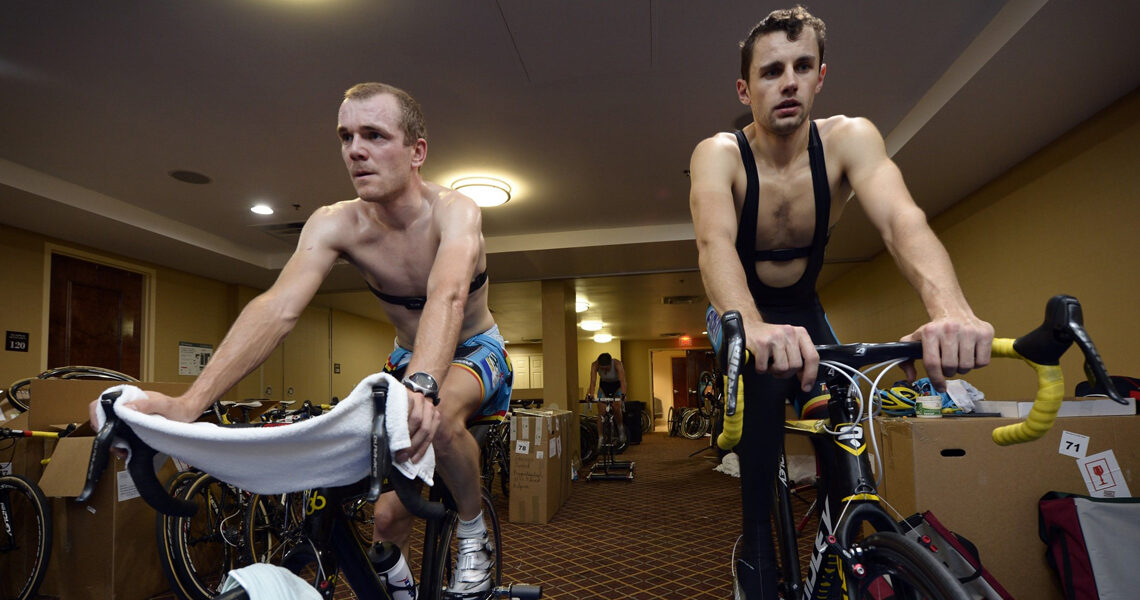
Indoor cycling has become a go-to training option for cyclists, especially during the colder months, but staying hydrated often takes a backseat to other performance strategies. In this Pez Toolbox article, we examine why hydration is vital for peak performance in indoor cycling, explore the unique challenges posed by controlled indoor environments, and share actionable tips to help cyclists stay optimally hydrated before, during, and after their rides. Master your hydration strategy and make every indoor session count.
Indoor cycling has become a staple for cyclists seeking a controlled environment to hone their skills and maintain fitness, especially during the colder winter months. However, the importance of hydration during indoor cycling sessions is often underestimated.

In this week’s Pez Toolbox article, I wanted to explore why staying hydrated is crucial for indoor cyclists, the unique challenges posed by indoor environments, and provide practical tips on how to maintain optimal hydration levels for peak performance and overall well-being.
Understanding the Importance of Hydration
Proper hydration is a cornerstone of any effective training regimen, and indoor cycling is no exception. Sweating is the body’s natural cooling mechanism, and even in a controlled indoor environment, cyclists can lose a significant amount of fluids through perspiration. Dehydration can lead to decreased performance, impaired concentration, and increased risk of injury. Whether you’re engaging in a high-intensity interval training (HIIT) session or a longer endurance ride indoors, maintaining a balance between fluid intake and sweat loss is key to unlocking your full potential.
Challenges of Indoor Cycling Hydration
Indoor cycling presents unique challenges compared to riding outdoors. The controlled climate of a fitness studio or home gym can create a false sense of security, leading cyclists to neglect their hydration needs. The absence of wind and external cooling can result in increased sweating, as the body relies solely on evaporative cooling. Additionally, the convenience of a nearby water source may lead to sporadic sipping rather than a consistent and intentional approach to hydration. Overcoming these challenges requires a proactive mindset and a well-thought-out hydration strategy.

Developing a Hydration Strategy for Indoor Cycling
Pre-Hydration:
- Start your indoor cycling session well-hydrated. Aim to consume at least 16-20 ounces of water 2-3 hours before your workout. If you typically ride first thing in the morning, consider your hydration the night before.
During Exercise
- Sip water regularly throughout your session. Consider investing in a spill-proof water bottle and placing it within arm’s reach for easy access.
- For longer sessions or high-intensity workouts, consider a sports drink to replenish electrolytes lost through sweat.
Monitor Sweat Rate:
- Weigh yourself before and after a workout to estimate fluid loss. Consume 16-24 ounces of fluid for every pound lost during exercise.
- We’ve previously published a detailed guide to calculating your sweat rate.
Electrolyte Balance
- Indoor cycling, especially in a heated room, can increase electrolyte loss. Include electrolyte-rich foods in your pre-workout meals and consider supplementation if needed.
Post-Workout Rehydration
- Rehydrate with water or a recovery drink containing carbohydrates and protein. Aim to replace 150% of the fluid lost during exercise within the first few hours post-workout
Choosing the Right Hydration Products
The market offers a variety of hydration products, from electrolyte tablets to specialized sports drinks. Experiment to find what works best for you. Electrolyte tablets can be a convenient way to enhance water with essential minerals, while sports drinks can provide a quick energy boost during intense sessions. Remember to read labels and choose products with minimal added sugars and artificial ingredients.
Signs of Dehydration and Overhydration
Be attentive to your body’s signals. Signs of dehydration include dark urine, dizziness, and excessive thirst. On the other hand, overhydration (hyponatremia) can result in nausea, confusion, and swelling. Strive for a balanced approach, adjusting your fluid intake based on the intensity and duration of your indoor cycling sessions.
Conclusion
Indoor cycling offers a controlled and efficient environment for training, but proper hydration remains a critical factor for success. By understanding the unique challenges of indoor environments and implementing a thoughtful hydration strategy, you’ll ensure that every pedal stroke takes you closer to your fitness goals. So, sweat smart, stay hydrated, and ride on! That’s all for this month – stay safe, ride fast, and I’ll see you next month!

The post Hydration Hacks for Indoor Cyclists: Mastering Your Fluid Strategy for Peak Performance appeared first on PezCycling News.




